I hear this a lot: “Ontario wines are too expensive.”
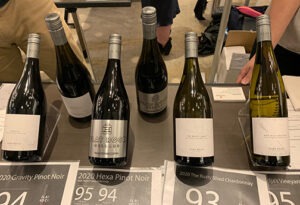
Flat Rock had a premium lineup at last month’s Taste Ontario trade event.
But the reality is that, with isolated exceptions, profit margins are quite small in Ontario wine country, and for many owners it’s more of a passion project than a moneymaking venture. Given the overhead, including taxes and land and labour costs, it’s incredibly difficult to compete with countries like Chile, Spain and South Africa (to name a few), particularly in the sub-$20 category—and virtually impossible in the sub-$15 range—especially when it comes to hard-to-ripen red varietals like Cabernet Sauvignon.
I’ve written on why it’s so expensive to make wine in this province, but there is, in fact, a sweet spot—the $25-$40 range—where I think many Ontario wines truly shine in the value department, especially when it comes to Chardonnay and Pinot Noir, including the sparkling wines made from those two grapes.
“We pride ourselves on overdelivering on price,” says Flat Rock Cellars’ Jacob Glantz. “People taste our wine and say, ‘I can’t believe it only costs this much!’”
The better educated the consumer, the more appreciated Ontario’s Chardonnays and Pinots tend to be. Glantz says they’re not trying to compete with the high-volume $12 international budget wines; rather, that they’re trying to compete with Burgundy and Sonoma. And they’re doing a pretty good job of it. Consider Flat Rock’s Capstone Series 2020 Gravity Pinot Noir ($40.15 retail, $31.66 licensee). Twenty different picking sessions during the excellent 2020 harvest added layers of complexity to this terrifically balanced pinot, which earned a 94 score from both esteemed British wine columnist Jamie Goode and Winecurrent.com’s Vic Harradine. (For what it’s worth, I scored it a 92 and WineAlign’s hard-marking Master Sommelier John Szabo gave it a 90.) Regardless, compare it $80 Oregon pinots and you’ll begin to appreciate the value that Ontario offers at this loftier level.
There’s even bang for the buck at the winery’s highest tier as well, as exemplified by the 95-point rating from Goode of Flat Rock’s recently released 2020 Hexa Pinot Noir, which retails for $79.95 ($63.32 if you’re a licensee). That wine also received a 94 rating from The World of Fine Wine magazine in a listing of “20 Notable Canadian Pinot Noirs” (check out page 137 of this link). “A $4,000 Domaine de la Romanée-Conti Grand Cru had the same score in the same issue,” Glantz points out.
“I personally think all of our prices should be higher,” adds Glantz, whose winery might be most famed for its Rieslings. In fact, Flat Rock’s 2019 Nadya Vineyard Riesling earned Best in Show honours at the 2022 Decanter World Wine Awards as one of the 50 best wines submitted from more than 18,500 international entries. You can pick up the 2020 vintage, a Platinum Award winner at the WineAlign National Wine Awards of Canada, for just $33.15 at the winery.
The truth is that many Ontario wines are more appreciated outside of Ontario, especially in Europe, where tastes are less about full-bodied, high-alcohol wines and more about sophisticated and food-friendly styles. If you favour bold Napa reds, then it’s going to be hard for Ontario’s climate to produce them, unless you’re doing an appassimento style of winemaking by partially drying the grapes to increase the wine’s intensity. And if you like your chardonnay big, oaky and a little higher in ripeness and alcohol, well, that’s not Ontario’s style either.
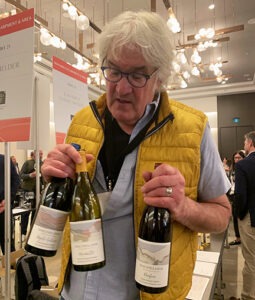
Winemaker Thomas Bachelder is on a mission to distinguish Niagara terroir.
BUYING VERY LOCAL
However, if you favour the wine stylings of Burgundy, well, now we’re talkin’! But for Ontario’s most famous Chardonnay and Pinot Noir winemaker, Thomas Bachelder, it’s not just the quality that Ontario is capable of but the distinctiveness that he wants local wine drinkers to really appreciate. Different regions, after all, have different soils and microclimates that impart unique characteristics to the wines that grow there—particularly single-vineyard creations.
It doesn’t come cheap, of course. “It’s the way it’s gotta be. It’s the cost of living and labour in Canada, with very few subsidies,” says Bachelder, who produces chardonnay, pinot noir and gamay under his own label, is the founding winemaker at Niagara’s Le Clos Jordanne, has worked alongside winemaker Kelly Mason at Domaine Queylus south of Vineland, and has also produced wine in Oregon and Burgundy. (Will Lyons of London, England’s Sunday Times, by the way, has written that Bachelder’s “pinot noir ranks alongside the best in Burgundy.”)
“A single-vineyard pinot that has been sorted, stays in the barrel with some percentage of new oak for 20 to 25 months… how could that be $25? It’s not possible. There’s too much effort,” Bachelder says. “Grape Growers of Ontario sets the price of wine grapes, but every good vineyard costs double or more—you pay a bonus to the grower for those grapes. So yes, in Niagara a good single-vineyard (pinot) starts at $45 and usually goes to $75 a bottle. But more and more in Oregon, single-vineyard stuff starts at $75—and that’s U.S.! We’re cheap compared to them, and very cheap compared to Burgundy.
“But I think the big problem with the Niagara single-vineyard wines is getting them onto restaurant wine lists,” Bachelder notes. “The restaurants are very supportive of the glass pours that Niagara does, but they have trouble taking a $45 Niagara wine and 2.5-ing or tripling the price for the menu, because then people will say, ‘More than $100 for a Niagara chardonnay or pinot?!’ Well, yes, because your single-vineyard Burgundy starts at $240! Try a (Bachelder) Wisner-Wingfield Chardonnay ($60), a Wismer-Foxcroft ($55) or a Bai Xu ($49)!”
Bachelder is referring to some of Niagara’s most noted vineyards. Bai Xu, for example, is a 42-year-old vineyard rich in loamy clay, limestone, silt and sand that rests in Niagara’s Four Mile Creek sub-appellation below the bench of the Niagara Escarpment. “That’s why we call our mission, ‘Mapping Niagara one vineyard at a time,’ because we figure you can’t copy that,” Bachelder explains. “You can copy a reserve chardonnay or pinot, but if you have a Bai Xu, or Red Clay Barn Block or Spencer-Morgan, those are unique to a place. Even if people don’t visit Niagara often, on the bottle it tells them, ‘This comes from here, and it’s specific.’ We need to get people talking appellations more (as they do in Europe), and not just what producer happens to be hot right now. We need to foster that love of the land in Niagara. Then the writers and sommeliers can say, ‘Let’s compare these to Burgundy.’ We don’t need to surpass them; we just use their techniques of letting our local terroir shine.”
LEED-certified Southbrook is a showcase of quality organic and biodynamic winemaking.
QUALITY OF LIVING
Southbrook Organic Vineyards in Niagara-on-the-Lake is letting its terroir shine through its organic and biodynamic winemaking practices. I spoke to Southbrook Proprietor Bill Redelmeier a couple years ago about how much better Ontario treats its migrant workers compared to other parts of the world, and then continued the conversation last month with Southbrook representatives at the Taste Ontario trade show in Toronto.
“I think what many people have to ask themselves is, ‘What is a living wage? What do we expect for our own lives and for other people to have in their lives?’” observes Warner Bennett, V.P. of Wine Lovers Agency and a licensee sales agent for Southbrook. “Access to health insurance and a place to put your head down at night after a long day at work just don’t exist in many countries. It’s almost a form of modern-day slavery in many places around the world. So when you’re paying a premium for a product like Southbrook, you’re paying for a lot of stuff you don’t see.”
Of course, you’re also paying for you can see and taste, and Southbrook’s following is steadily increasing. “For people who don’t like Chardonnay, this is changing hearts and minds,” says Bennett, as I sample the latest vintage of Southbrook’s Triomphe Organic Chardonnay ($26.75). “The reaction is incredible across the board for this wine.”
“In my opinion, Chardonnay is the best grape variety in Ontario, probably the thing we as a region do best, so it’s always nice to showcase it,” adds Southbrook Sales and Marketing Specialist Andrew Redelmeier.
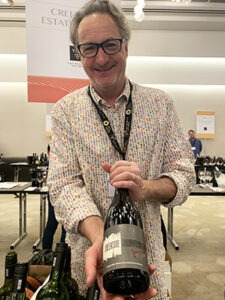
Head winemaker at Creekside and Queenston Mile, Rob Power.
PATIENCE, PATIENCE
Even among bolder red wines, there are legitimate 90+ scores to be found in that sub-$40 category—despite Ontario’s climate-imposed challenges. And few, if anyone, do it better than Rob Power, head winemaker at Creekside and Queenston Mile.
Around the $15 level for VQA wines, “we probably ask our consumers to pay a little of what I would call a ‘Maple Leaf premium’ to buy local,” Power suggests. “But if you go into the $20-$30 range, VQA wines actually hold up against international wines that cost $5 to $10 more than that.”
Personally, I think Creekside’s entire lineup is well priced, but there’s indeed particular value to be found in the $20-$30 range. One inherent advantage Power possesses is a patient ownership that allows his crew to age wines at this price point more than most Ontario wineries are able to do prior to release. That extra barrel time always pays dividends, especially for Creekside’s $25 Laura’s Red (a traditionally earthy, complex Bordeaux blend of Cab Sauv, Merlot, Malbec, Cab Franc and Petit Verdot), as well as a few of the winery’s Syrahs (try the Iconoclast Syrah, also currently $25 at the LCBO, although it is in the process of jumping to $30).
The bottom line, as always, is that value lies in the eye—or in this case, the tastebuds—of the beholder. If you’re spending less than $20 (I’ll have my annual Top 40 list of that price range later this summer!), there’s a handful of solid Ontario values—especially Rieslings—that can be unearthed with careful digging.
But if you’re willing to jump to the under-$40 mark, there’s a treasure trove worth sampling right at your fingertips that international wine experts hold in very high regard.
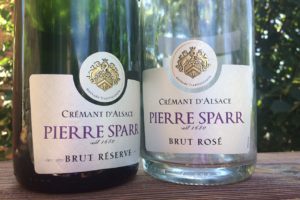

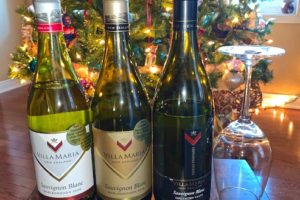

Leave a Reply
Your email is safe with us.